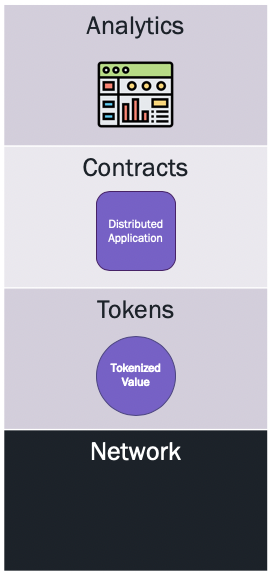The IW what? Introducing the InterWork Alliance
Today marks the launch of the Interwork Alliance (IWA), an industry organisation to drive standardisation across tokenised assets. Its launch members include Accenture, Credit Suisse, the DTCC, IBM, ING, Microsoft, Nasdaq, UBS and, of course, Web3 Labs which bears testament to the significance of this initiative.
Enterprise Token Standards
With the immense growth in asset tokenisation on DLTs that emerged in the past few years, one of the main challenges facing organisations has been how best to go about adopting these technologies.
There are multiple platforms and ecosystems to choose from. Some of which provide their own standards initiatives (such as the Enterprise Ethereum Alliance for Ethereum), and others provide a standardised platform for developing on different platforms like Digital Asset’s DAML platform.
However, with these platforms, they have typically emerged in a bottom up manner. The technology was established, and in some instances, business applications have been defined around the technology, rather than from the perspective of the business problems they’re trying to solve.
The InterWork Alliance was formed to address this challenge. It aims to bridge the gap that currently exists between businesses and the opportunities offered by technologies such as distributed ledger and multiparty compute.
In allowing standards to be defined by the business problems that they solve, rather than the underlying technology, the IWA will ensure that the manner in which these technologies are adopted is best suited to the underlying business requirements they address, providing a clear indication of how these technologies should work in harmony with one another.
The Specification Stack
This Market Driven approach taken by the IWA is reflected in the specification stack that it intends to produce. Each layer will support a different abstraction relating to the underlying business goals. These are divided into Tokens, Contracts and Analytics which will be technology neutral as the below stack demonstrates.

- The Token layer uses the Token Taxonomy Framework to describe the underlying behaviours required for tokenised assets.
- The Contracts layer uses the Interwork Framework abstractions to define common languages and communication protocols for smart contracts spanning multiple ledger platforms.
- The Analytics layer provides schemas for sharing data in a privacy preserving manner between services and supporting market-driven reporting.
Working Groups and Guidance
Each layer of the stack will be supported by its own working group responsible for creating the standards for that layer. They will be complemented by business working groups focussing on the requirements for supporting specific use cases or verticals ensuring that the stack specifications are fit for purpose. Finally, the group’s steering committee will oversee the group as a whole.
Looking to the Future
The overarching goal of the IWA will be to provide certification on top of the standards it produces. However, in the nearer term, providing standards that are technology agnostic will be a significant driver for tokens in enterprise, as there will be a wide number of underlying platforms and implementations to choose from.
Ethereum has certainly been a key innovator and driver for the token economy and DeFi. By providing a common standard that supports not just Ethereum but other platforms, we will become ever closer to providing the confidence that enterprises need to run these technologies at scale.
As the IWA has just launched, the next few months will be a fascinating time and I encourage you to head to the InterWork Alliance to learn more!
